The world became a little less amazing two days ago. When we lost my friend Doug Trumbull to his battle with cancer, at age 79, it sent a ripple of shock and sadness throughout the universe. Particularly the universe of visual effect artists who, in complete unison, credit his work on films like Blade Runner (1982) and 2001: A Space Odyssey (1968) as one of their main reasons for entering the field.Ed Kramer on the passing of Doug Trumbull. Read more at The Companion.
News
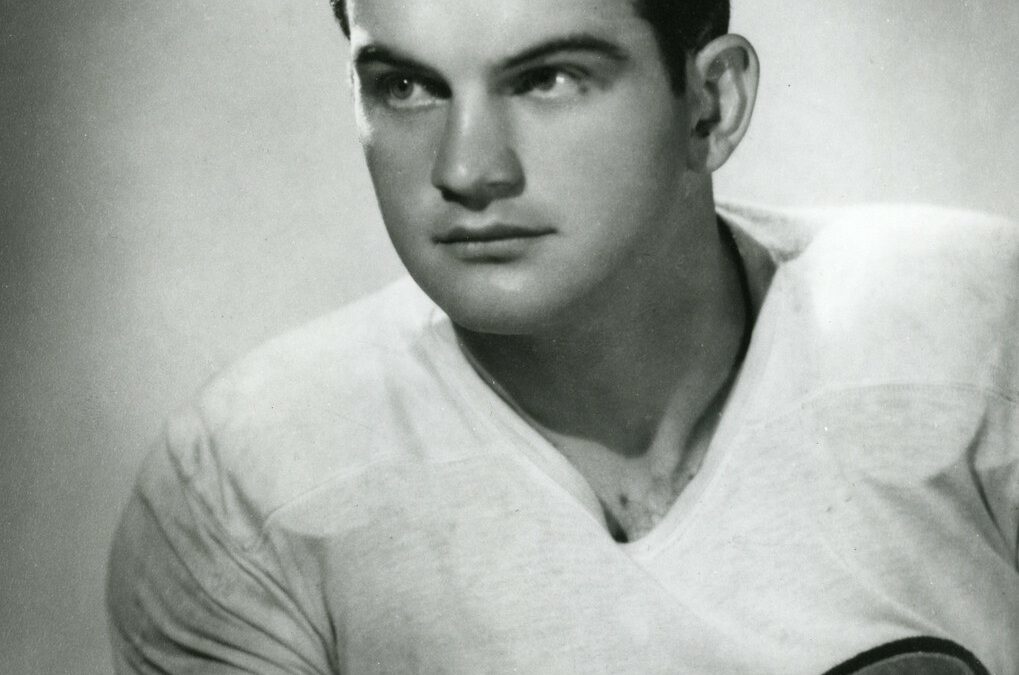
Memories of Chuck Csuri
Wayne Carlson, SIGGRAPH Pioneer
The computer graphics world, and indeed the entire world, lost a great friend and colleague this week. Charles ‘Chuck’ Csuri passed away just months from his 100th birthday. Chuck retired from a distinguished and exemplary career at the Ohio State University, but his influence has been felt far beyond the boundaries of the campus. In the last few days I have read several postings memorializing Chuck, and many wonderful comments from former students and people from the multiple disciplines that he touched with his contributions.
I was fortunate to work with him for nearly 20 years, first as a graduate student in his lab, then as a VP at his commercial computer graphics company, and ultimately as his successor in the academic program and research facility that he created. His mentorship defined my own academic career in computer graphics, and I am forever grateful to him.
Chuck was born in 1922 on the 4th of July in West Virginia and was always proud of his Hungarian roots. He graduated from Fine Arts at Ohio State, where a friend and classmate, and later fellow faculty member, was Roy Lichtenstein.
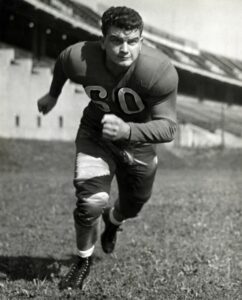
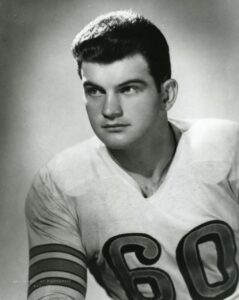
Chuck’s choice to attend Ohio State is interesting in its own right. In his own words, he was “a skinny kid that was growing into a bigger body” and was a pretty good football player at Cleveland West Tech. An assistant coach at OSU was friends of his high school coach at Tech, and saw him play. He convinced Chuck that he might be able to be successful playing for the Buckeyes while he pursued his art degree. He ended up as a three-year letterman at tackle, playing for legendary coach Paul Brown, played on the school’s first national championship team in 1942, and earned All American and MVP honors. The following year he was selected in the 1944 NFL Draft by the Chicago Cardinals, but instead of playing in the NFL he served the next three years in the Army, and fought in the 1944 Battle of the Bulge in WWII.
When he returned to the states, the Army assigned him to an engineering school for training, and his interest in combining the aesthetics of art with issues in the world of engineering was piqued. This interest in interdisciplinary relations permeated his career from that point on. He got his graduate degree in Art and joined the faculty, and became interested in how he could use the computer to realize his visions from the first time he was introduced to this emerging technology. In the early 1960s he began experimenting in this realm and in his words, was “hooked”.
In the late 1960s, Chuck created the Computer Graphics Research Group (CGRG) using funding from a grant from the National Science Foundation. This funding, and subsequent grants, allowed him to create amazing images over the following years, including a computer generated movie, “Hummingbird”, now in the permanent collection of the Museum of Modern Art. One of his early pieces, “Random War”, was influenced by his experiences in the Army, and depicts the idiocy and randomness of death in battle.
The makeup of the members of CGRG matched his desire to put people from diverse disciplines together to advance his vision of creating artistic artifacts with the aid of the computer. Mathematicians worked with designers, with statisticians and engineers, and with artists and computer scientists. This interdisciplinary interaction brought us together. I had earned degrees in theoretical mathematics, but had become enamored with the things that a computer could bring to the discipline, so I headed to Ohio State from my home state of Idaho to do a PhD in computer science. One evening I attended a lecture by an artist who was using the computer as an artistic tool. I stayed after and talked for the next hour with that artist, Chuck Csuri.
I got a call not long after that from one of Chuck’s students. Chuck was looking for a mathematician to help with a grant that he had received from the Air Force Office of Scientific Research that provided funding to develop software to visualize the stresses on the wings of Air Force fighters at high speeds, and he remembered our conversation. Our relationship began with that call, and I soon joined his lab.
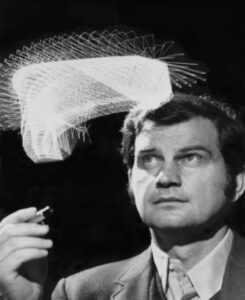
The next five years saw my fellow graduate students in the lab pushing the boundaries of cgi and computer animation. We developed software and hardware solutions and published our results, all in the progressive environment of interdisciplinary study fostered by Chuck as the director of the lab. It wasn’t always easy… Chuck might come into the lab in the morning saying “I want to be able to render artistic smoke clouds” or “I would like to see galaxies interact with each other, represented by millions of stars in each”. We’d look at our PDP 11-45 computer and swallow hard, but we would find a way to do it. It was Chuck’s energetic desire to push the limits that drove our contributions to the discipline.
Chuck had a way of quietly connecting with other researchers and labs across the country, and indeed, around the world. I don’t know how he did it, but he found a way to set aside enough cash to support every member of the lab to attend the SIGGRAPH conference every year. We would learn so much from the technical sessions, but the real advantage was meeting well into the night with other researchers, exchanging ideas and video tapes, and generating immeasurable energy that would impact us the entire year until the next conference.
In 1981 Chuck realized a personal goal of obtaining funding to take what we did in the lab to create a commercial computer animation company, and he asked me to join in that venture. Cranston/Csuri Productions created commercial animation for various clients over the next almost seven years. The necessary environment with artists and technologists working together in a company of this type was a natural extension of what we did in Chuck’s lab, and greatly contributed to the company’s success.
The company was co-located with CGRG in offices on the edge of campus, and the symbiotic relationship benefitted both organizations. Staying engaged with the University, Chuck succeeded in finally creating a formal academic program in computer graphics and computer art. Called the Advanced Computing Center in the Arts and Design, or ACCAD, it has become one of the premiere graduate programs in the country. I was honored to be chosen to succeed Chuck as the director of the program when he “retired” in 1990. We were able to acquire permanent funding that provided space in the lab and personnel to assist Chuck in the continuation of his creative ventures, which he did until his death.
Throughout his years at the University, Chuck navigated the politics within the University and the skepticism of the kind of cross-disciplinary environments that defined his activities. He eventually convinced faculty and administrators of the value of his vision, and in 2000 achieved the highest recognition of all of his various accomplishments. He received the Ohio Governor’s Award for the Arts, and Ohio State’s Joseph Sullivant Medal in acknowledgment of his lifetime achievements in the fields of digital art and computer animation. In 2006, ACM-SIGGRAPH arranged a retrospective of his career’s work titled Beyond Boundaries, and in 2011 they bestowed upon him the Award for Lifetime Achievement in Digital Art. Beyond Boundaries then travelled to different art museums and sites around the world. In 2014, he received the Distinguished Alumni Achievement Award from the Ohio State University College of Arts and Sciences.
I know many of his students and colleagues that benefited from his energy and insight that are currently in universities, cgi labs, and companies around the world will remember Chuck Csuri forever. He was preceded in death in 2019 by his artist wife of 70 years, Lee, who he always referred to as his best friend, and his son Steven in 2018. His daughter Caroline and his two granddaughters Hannah and Emily Reagh continue to contribute to his legacy. A memorial statement from Ohio State indicates that donations and gifts in Chuck’s name are requested to be directed to his favorite charity, the Special Olympics. His website https://www.charlescsuri.com and instagram account https://instagram.com/charlescsuri will remain active, and condolences can be left at either.
OSU Oral History Project, June 2003, https://kb.osu.edu/handle/1811/5928
Charles A. Csuri: Beyond Boundaries 1963-Present, https://www.otterbein.edu/wp-content/uploads/2018/11/csuri_glowski_beyond_boundries.pdf
Distinguished Artist Award – Now Open
The Distinguished Artist Award for Lifetime Achievement in Digital Art is presented annually to an artist who has created a substantial and important body of work that significantly advances aesthetic content in the field of digital art.
ACM SIGGRAPH members, artists, curators, and theorists submit your nomination for the Distinguished Artist Award by January 31, 2022.
More detailed information and the submission link is located at:
Note: On the submission form for User Select: Arts Award Committee Chair.
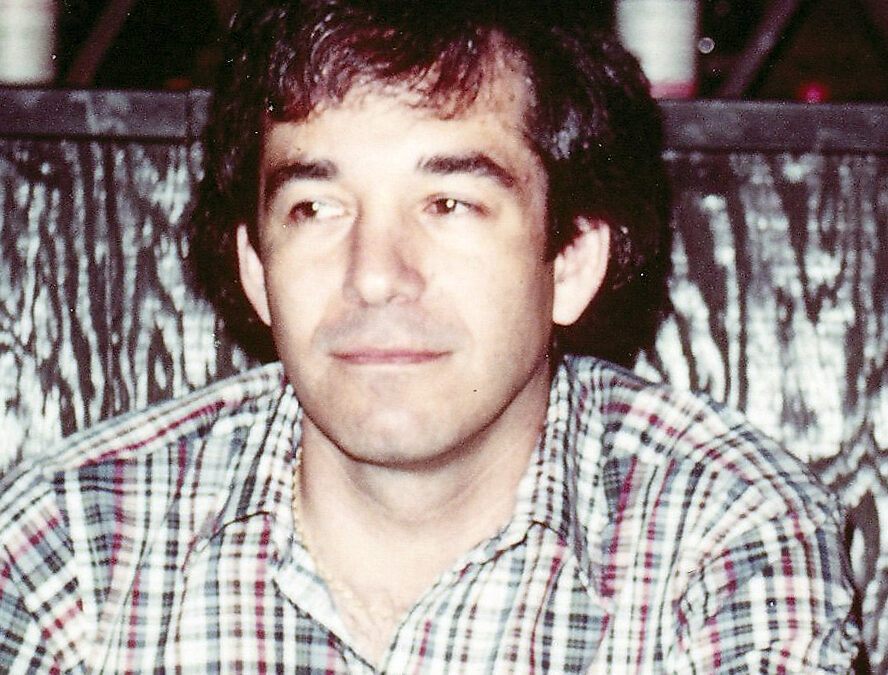
A Tribute to Stephen R. Levine
Maxine D. Brown
maxine.d.brown@gmail.com
January 7, 2022
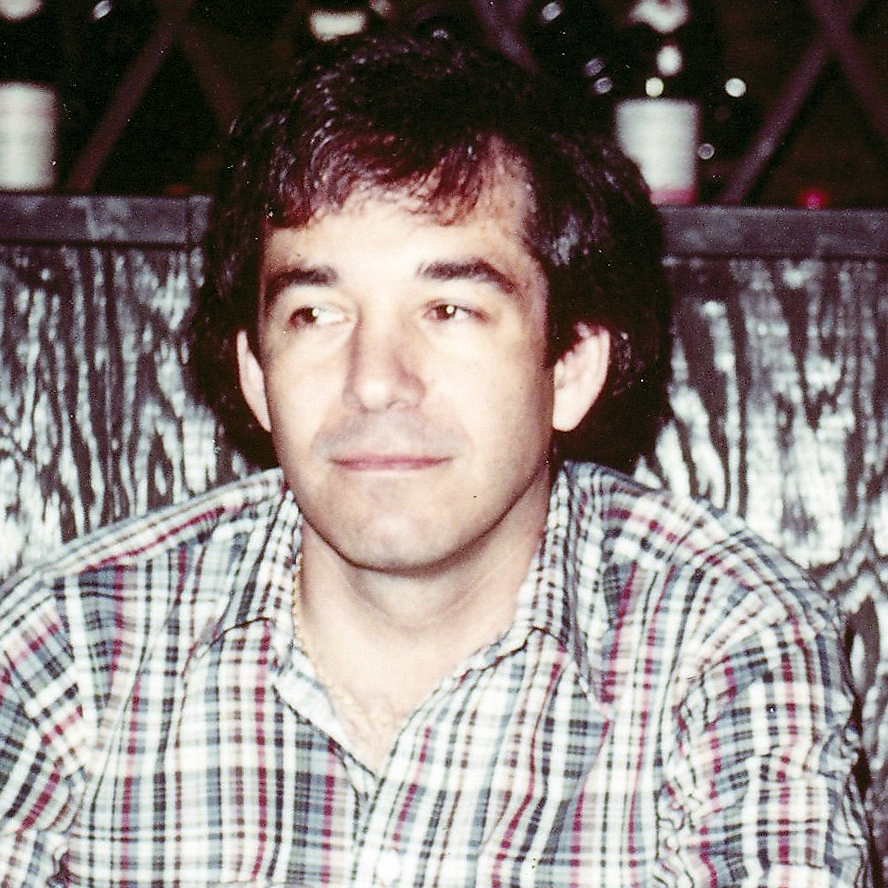
Steve Levine was a ‘force of nature’ who, in the 70s, greatly impacted the growth and sustainability of the ACM SIGGRAPH organization and conference and took a chance on me, a volunteer recruit fresh out of grad school, enabling me to contribute in ways I best could. It is with heavy heart that I write the SIGGRAPH community that my long-time friend and mentor passed away on November 12, 2021 at age 81 from Parkinson’s disease.
Steve was the SIGGRAPH 77 General Conference Chair as well as the SIGGRAPH organization’s Treasurer from 1975- 77 and Vice Chair from 1977-79. His most significant contribution, in my humble opinion, was starting the conference’s exponential growth, from 300 attendees in 1976, to 750 in 1977, to 3,000 by 1979. He did this in collaboration with Jim George, his Stanford University graduate school friend who served as the SIGGRAPH 77 Program Chair, as well as the SIGGRAPH’s organization’s Secretary from 1975-77 and Chair from 1977-81. Steve, a member of the graphics group at Lawrence Livermore National Laboratory (LLNL), got several work colleagues involved with the conference, including George Michael, a computational scientist – and George Michael subsequently adopted conference innovations that we nurtured for the burgeoning computer graphics community when he became Chair of the first ACM/IEEE Supercomputing (SC) Conference in 1988.
I met Steve at the SIGGRAPH 76 conference – my first, but SIGGRAPH’s third. I had just moved to California’s Bay Area for a new job and learned that SIGGRAPH 77 was to be held in San Jose. Steve invited me to be on the organizing committee as Local Arrangements Co-chair.
Steve changed the paradigm of an academic conference, transforming SIGGRAPH into a ‘happening.’ He also made sure that committee members, who did not all know one another, had opportunities to bond at planning meetings in San Jose, organizing lunches or dinners at nice restaurants, given he had a passion for food and was a gourmet cook.
In addition to offering attendees top-quality tutorial/workshops and a technical program that promoted original work and unusual or unique applications and techniques, Steve found and empowered committee members to create a variety of off-scale conference venues:
- An industry exhibition with 38 vendors held in the conference hotel’s ballroom (versus 1976, that had 10 vendors with tables on which they put product literature) – organized by Ray de Saussure, LLNL
- Special sessions on low-cost graphics (Apple was founded in 1976 and IBM PCs weren’t invented yet!) and raster graphics (raster was new tech then!) – organized by Bill Etra of the New School for Social Research and William Newman of Xerox PARC, respectively
- Poster session with software demonstrations – organized by Tom Wright of NCAR and Dan Weller of IBM • Fashion show, where the clothing’s fabric patterns and/or weave were designed with computers – organized by Joe Scala of Syracuse University
- Film and video show (billed as a “Media Spectacular”) that utilized state-of-the-art, large-format, audio/visual technologies – organized by Tom DeFanti of University of Illinois Chicago Steve Levine at SIGGRAPH 79
- Closed circuit TV to view films and videos in one’s hotel room – organized by Patsy Scala of Collaboration in Art, Science and Technology, Inc.
- Social events (a wine & cheese party and a barbeque held poolside at the hotel)
Steve also insisted on conference T-shirts, but since we couldn’t afford to make T-shirts in advance and, even if we could, we didn’t know if anyone would buy them, we instead made decals of the SIGGRAPH 77 logo (also a first for SIGGRAPH!), took orders by day, and ironed them onto T-shirts at night for pick-up the following day!
Tom DeFanti, the SIGGRAPH 77 Media Spectacular Chair, recalls, “Steve believed that projecting computer graphics on large screens was as equally inspiring as reading about advancements in the proceedings, and empowered me to bring a crew of skilled audio/visual artists to assist, and who become the SIGGRAPH conferences’ first media techs.”
After 1977, Steve and Jim wanted to maintain the momentum of a large industry exhibition and drafted me to help them do this for SIGGRAPH 79, co-chaired by Tom DeFanti and Bruce McCormick. We had 80 vendors – and moved the event from a hotel ballroom into an exhibition hall adjacent to the hotel.
Also in 1979, Steve introduced the SIGGRAPH Slide Set, which contained about 80 slides from academics, researchers, artists, and industry, showcasing the latest and greatest computer graphics applications and techniques, in full color, for educational use. Steve continued to develop the slide set annually for many years, and later distributed the images on microfiche as well. SIGGRAPH 79 produced the first conference poster, which featured Steve’s collected slide set, and many thousands of posters were distributed. Some were framed and are still on people’s walls, myself included!
The excitement of the ’77 conference inspired future conference chairs to expand upon the week’s happenings and attract new and diverse user communities. Jim George reflects on his long-time friend, “I attribute the concept of making this small academic society a major force to lead the industry as Steve’s dream, later transformed into a true partnership of art, science, technology and business. Steve and I started on this path and various contributors joined us – and Tom and Maxine contributed more than most. As leadership, our strength was creating a welcoming environment for people to contribute, irrespective of their credentials and professional reputations, as we were looking for ideas and recognizing their contributions whether they be organizational, educational, artistic or scientific.”
As the SIGGRAPH 92 General Chair, I enlisted the help of my mentor. Steve, who was an outstanding pianist, organized SIGband and served as the band’s leader. We invited a few computer-graphics colleagues who played musical instruments to perform for attendees during the papers/panels reception.
For Steve’s 80th birthday party, in May 2020, held via Zoom due to COVID, Jim and I participated. Steve was happy to see us. In particular, he told me that I was an important part of his life – but the truth is, his invitation to help with SIGGRAPH 77 changed both our lives. Steve brought out the best in me and put me on my path to life-long friends, a successful career, and years of distinguished service to SIGGRAPH, for which I received the first SIGGRAPH Outstanding Service Award in 1998.
“The early SIGGRAPH conferences highlighted many innovations in the industry, and it still does,” concludes Jim George, “and that is Steve’s legacy.”
Many thanks to Jim George and Tom DeFanti for their input on this Tribute to Steve Levine. Steve leaves behind a wife, Stephanie Moore, and two daughters.
For those who wish to honor him, the family requests that donations be made to the “The MGH Parkinson’s and Lewy Body Fund” at Massachusetts General Hospital (MGH) where he was treated and where he volunteered for research studies. Donations can be mailed or made online.
Mail: Attention: Kylie Wojcicki Massachusetts General Hospital Development Office 125 Nashua Street, Suite 540 Boston, MA 02114 ** Indicate that the donation is a tribute gift in honor of Stephen R. Levine.**
Online: https://giving.massgeneral.org/ Click GIVE NOW. Click the pull-down box “Make this gift a tribute to” and specify “In Honor of Stephen R. Levine”. Click the pull-down box “Optional: Please send a notification of my gift” to inform Steve’s wife, as she very much wants to thank everyone who donates: Stephanie Moore, PO Box 2090, Andover, MA 01810 At the bottom of the page, click the pull-down box “Designate this gift to a specific program or area” and specify: The MGH Parkinson’s and Lewy Body Fund in honor of Stephen R. Levine
Should you have any Steve stories and/or photos you wish to share with Stephanie, please send to Maxine Brown and I will share with her.
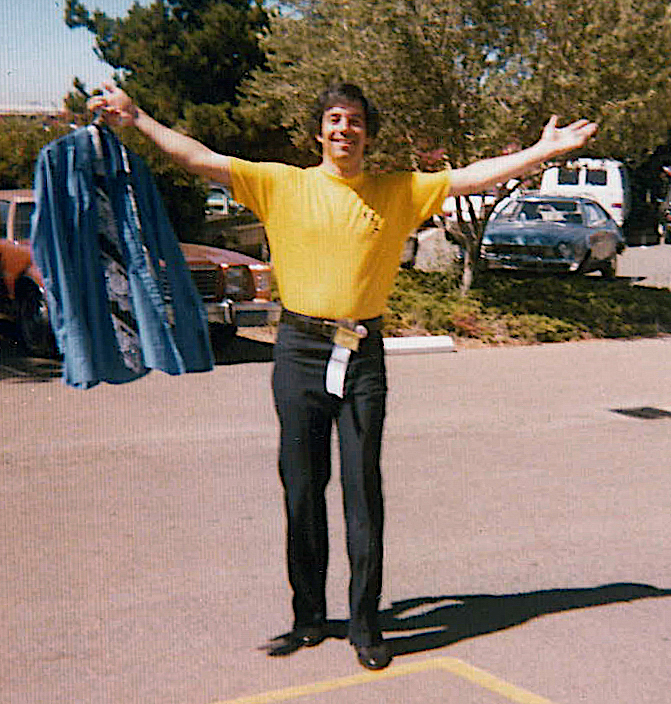
conference T-shirt as he gets ready to change into
clothes to model during the Fashion Show event.
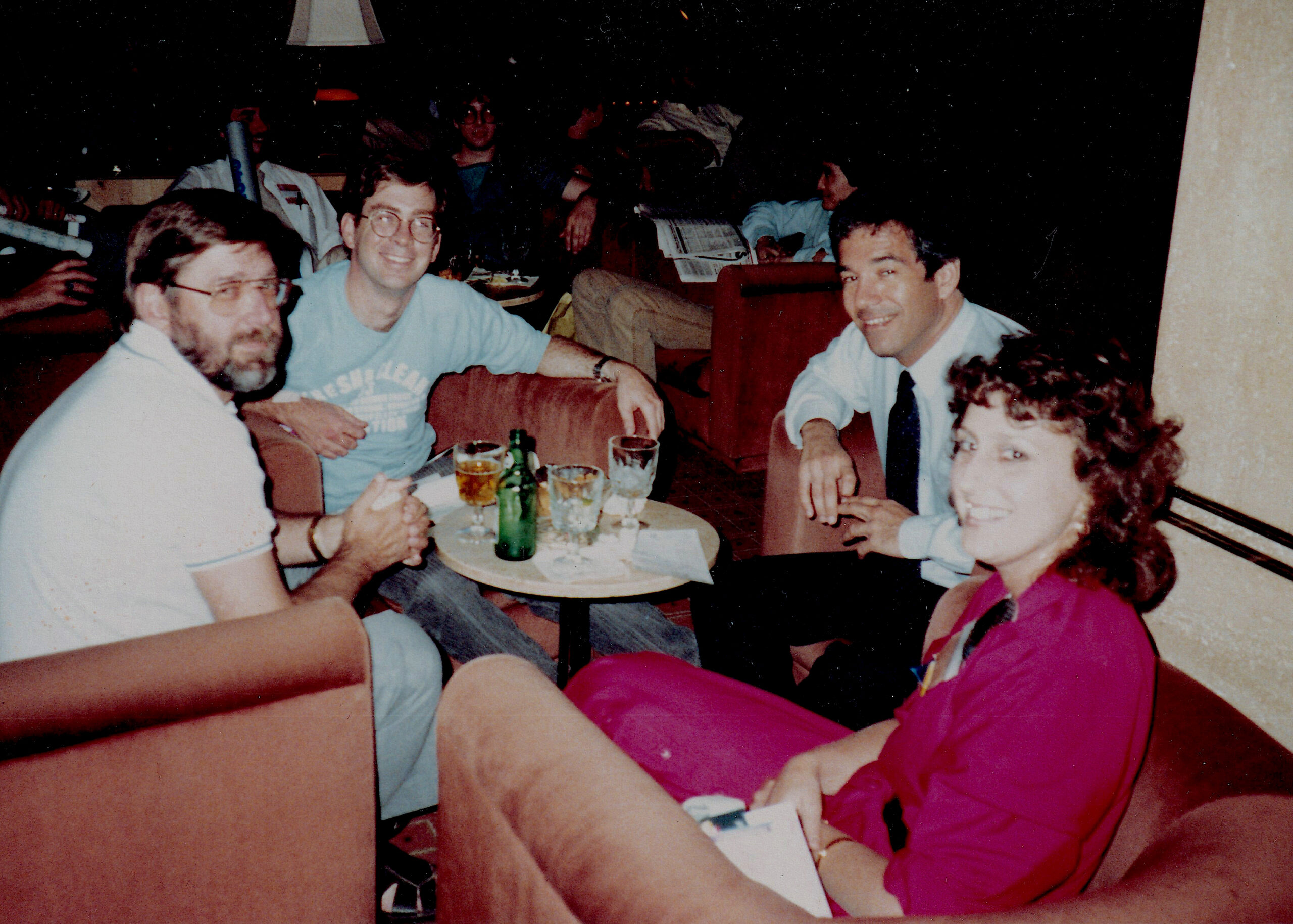
Jim George and Tom DeFanti at SIGGRAPH 84.
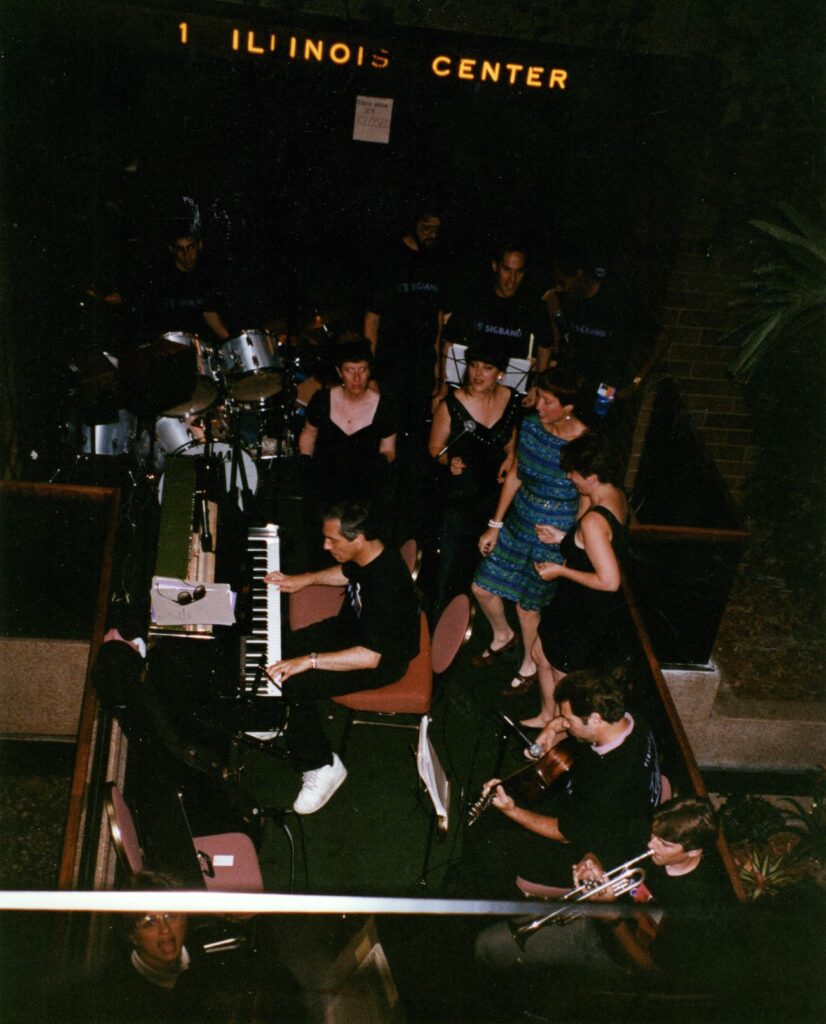
at piano and volunteer musicians and singers.
Deadline January 31: Nominate your colleagues for the ACM SIGGRAPH awards for researchers, practitioners, artists, and educators
Please submit award nominations by January 31: Computer Graphics Achievement Award, Significant New Researcher Award, Outstanding Doctoral Dissertation Award, Outstanding Service Award, Distinguished Artist Award, Practitioner Award, Distinguished Educator Award and ACM SIGGRAPH Academy.
See https://www.siggraph.org/about/awards/. Don’t put it off to the last minute! Act right now to recognize someone who’s done something great!